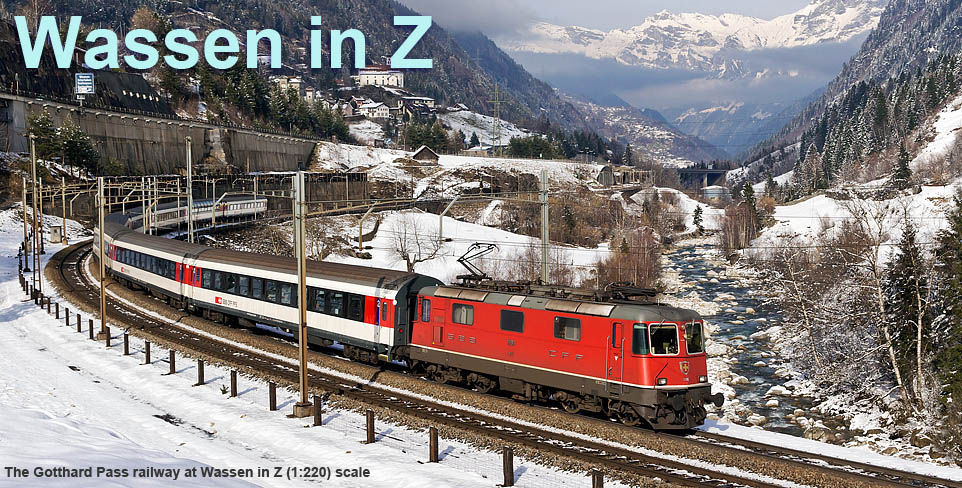All 'looking' good, but now, how to actually get a speeding Rokuhan loco to run with a slower Marklin one...
I read on the magic interweb that you can take about .7 volts out of a wire using a diode, so 4 were soldered up in pairs and this did indeed slow the loco down a tad - enough that they run fairly comfortably together.
Experimenting:
As installed:
Then after some track cleaning, run-testing commenced. The first issue was the clearances between raised pantographs vs tunnel portals - this was quickly resolved.
As feared, the next problem was some uncoupling from the Re 6/6 on tight curves due to the long overhang of its body-mounted couplers. This was mitigated somewhat by clipping the wee 'uncoupling' nub from the underside of the coupler - on the sharpest curves this was hitting the outer rail and upsetting things.
But uncoupling remains somewhat of a problem, primarily vs the Marklin Re 4/4, as that loco is running slower and gets pushed in places, with its bogie-mounted coupler following the track line and the 6/6's sticking way out beyond the curve.
As an experiment, I put the 6/6 in front and because the 6/6 is a tad faster, the pair runs very well together with no uncoupling issues detected. Arguably the loco combination looks better too (from a distance!), as the 6/6 is a little taller than it should be. But of course this isn't what had been planned... is the 6/6 a good enough model to lead? I suppose it could be made to look a little better with more filling, painting and detailing of the nose, plus the installation of a pilot to replace the front coupler.
The other issue that has to be dealt with somehow is that my 'raised' pantos need to be lowered further to clear the fairly tight spiral in the south hill above the Wassen church just beyond where the above video stops...!






































